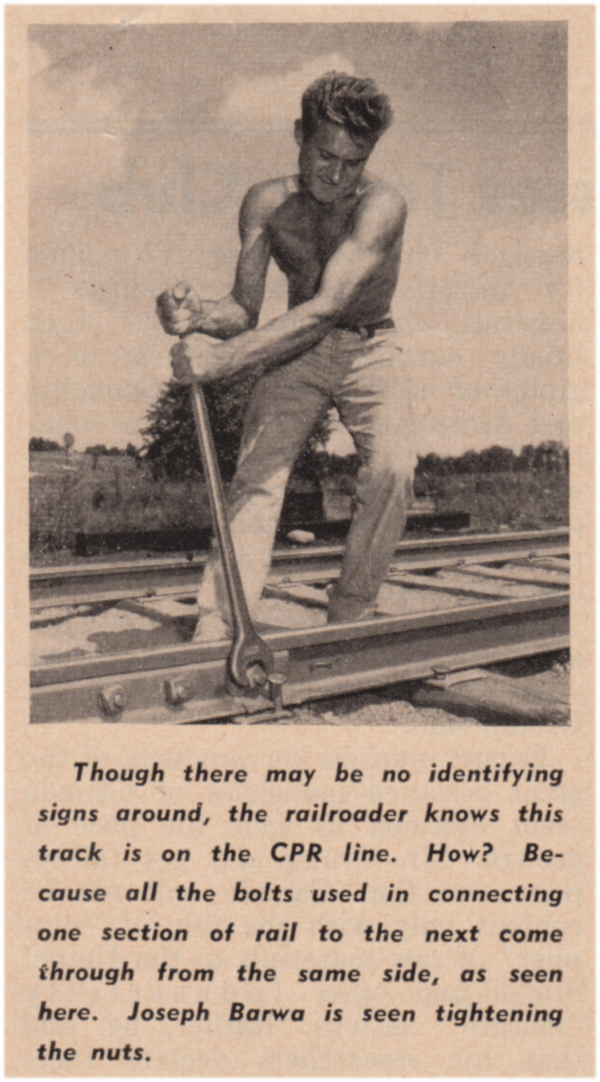Eighty years ago, railway technology was more basic.
Railways were more inclined to promote employees from within.
The CPR produced a small 'library' of books for motivated employees to study.
Back then, employees could better understand 'The Big Picture' through these books.
Today, these books preserve readable descriptions of how the railways were organized
and how employees went about their work.
An enormous amount of semi-skilled labour was used in the maintenance of the railways' dense track networks across Canada. This account was published only a decade or two after Canada's railway network reached its peak mileage with the settling of the Canadian west.
Many European immigrants to Canada were attracted by the government promise of cheap farmland. Many later chose to, or found it necessary to, earn money along the line of their local railway.
Heavy maintenance of way work did not require a good command of English. However, a farm background, with its experience of long hours of demanding physical labour, met the railways' requirements perfectly.
My father acquired these two CPR stock photos in the 1940s.
Above: A plow extra clears a siding.
Notice the heated water tank at the right margin.
Below: The extra's Jordan spreader clears the end of an adjacent siding.
The following photos illustrate CPR track work in the 1950s.
 |
| from: Spanner; Sep/Oct 1957, Canadian Pacific Railway. |
 |
| from: Spanner; Sep/Oct 1957, Canadian Pacific Railway. |
 |
| from: Spanner; Sep/Oct 1957, Canadian Pacific Railway. |
 |
| source: from file, as noted |
My father saved this advertisement for his files.
I checked a more recent employee timetable which stated that this interlocked
crossing was then at Mile 66.6 on the CNR Kingston Subdivision.
* * *
 |
| from: In Search of the K&P; Bennett & McCuaig; 1981; Renfrew Advance Ltd. |
A CPR secondary line section gang (above), and a main line rail gang (below).
Above: On the Kingston and Pembroke Railway near Verona, Ontario - probably in the 1930s - you can see a section foreman with one of his workers. You can also see their lunch pails and various tools on the handcar. The right foot of the worker to the right rests on the head of a spike maul. Between his feet are a spike puller/lining bar and perhaps a tamping bar. A track wrench is held within the grab iron by his right leg.
Below: Near Ignace, Ontario in the 1920s, a summer rail gang is using a handcar as transportation to the work site in a nice panned photograph. Each worker maintains his balance by holding one of the 'pump handles' or a stationary piece of the car's superstructure.
An interesting bit of trivia comes below this photo.
... Frontier College volunteers worked to educate people, particularly workers,
in remote areas of Canada where formal education was not available.
 |
| from: Ignace - A Saga of the Shield; Elinor Barr & Betty Dyck; 1979; Prairie Publishing. |
 |
| from: Ignace - A Saga of the Shield; Elinor Barr & Betty Dyck; 1979; Prairie Publishing. |













